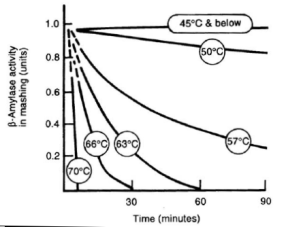worldofilth
New Member
- Joined
- Mar 9, 2014
- Messages
- 1
- Reaction score
- 0
Hi I'm new posting here but have been reading the forums for a couple of months. I recently attempted my first 5 gallon brew and went with northern brewers buffalo sweat clone (also my first attempt at a partial mash). During the partial it ended up mashing around 130-135* for about 3 hours, this may be the cause for my problem I'm not sure. Anyway everything else went well pitched the yeast and no visible activity in the air lock since, there is a very small ring maybe an 1/8 of an inch above the liquid. My starting gravity was 1.058 which what the instructions said it would be, I also added a pound of lactose sugar instead of a half during the boil. Took a gravity reading ~3 days later and it was 1.032, that was 4 days ago and it is still the same. The ambient temperature has been between ~50 at night and ~65 in the day. I used wyeast 1098 left out of the fridge for a few hours as per the instructions. So just wondering what the general opinion is, did I screw up somewhere, my temp to cold, pitch more yeast, RDWHAHB, it's normal, or something else?
Thanks in advance for any advice I receive
Thanks in advance for any advice I receive









































![Craft A Brew - Safale S-04 Dry Yeast - Fermentis - English Ale Dry Yeast - For English and American Ales and Hard Apple Ciders - Ingredients for Home Brewing - Beer Making Supplies - [1 Pack]](https://m.media-amazon.com/images/I/41fVGNh6JfL._SL500_.jpg)






